Category: Reports

AJOT INTERVIEW: AWO/AMP’S JENNIFER CARPENTER ANALYZES 2025
December 22, 2025
Jennifer A. Carpenter, President & CEO of the American Waterways Operators (AWO), representing the U.S. inland and coastal tugboat industry is also the President of the American Maritime Partnership.
In a video interview with AJOT, Carpenter addressed the following:
*This year’s low water levels on the Mississippi and the long-term challenges for the tug and barge industry.
* Challenges for Congress funding the rebuilding of locks and dams on the inland waterways is on-going. She praised the advocacy work of Waterways Council Inc in support of modernization.
* On the question, of continued support for the Jones Act amid criticism that it should be abolished, Carpenter argued: “Jones Act critics spill a lot of ink and make a lot of noise, but they don’t put America first – they have other priorities, like libertarian trade theology unsupported by American voters, and business interests not shared by the American workforce. Alarmingly, some libertarian dogmatists are alleged to have outright colluded with the European Union in a coordinated effort to undermine the Jones Act.”
* The Trump administration’s cancellation of offshore wind projects in 2025, resulted in project cutbacks at Atlantic and Pacific coast ports. In California, ports at Long Beach and Humboldt Bay were projecting to contract for 10,000 new jobs that are now cancelled including for tug and barge work. Carpenter said businesses need certainty if they are going to move forward with new investments and that prospect is not evident in offshore wind.
*Carpenter discussed the continued challenges women face in the U.S. maritime industry and progress the industry is making.
* Carpenter expressed the hope that the Ships for America Act, which would supports construction and acquisition of over 250 U.S. flag vessels, will eventually be enacted by Congress — in some form.
* Carpenter praised the work that U.S. shipbuilders are doing constructing vessels for the Jones Act fleet and for international trade.
* Carpenter discussed continuing efforts to recruit young people to work in the maritime industry.

AJOT interview with Noel Hacegaba, chief operation officer of the Port of Long Beach
Stas Margaronis, California Ports reporter for the American Journal of Transportation (AJOT), interviews Noel Hacegaba, chief operation officer of the Port of Long Beach on China, Green Energy, UP/NS Merger & More.

Road Dog Trucking AJOT Interview on Impact of Tariffs on U.S. Ports
November 30, 2025

CargoSprint’s Krissman on harbor truck appointment upgrades
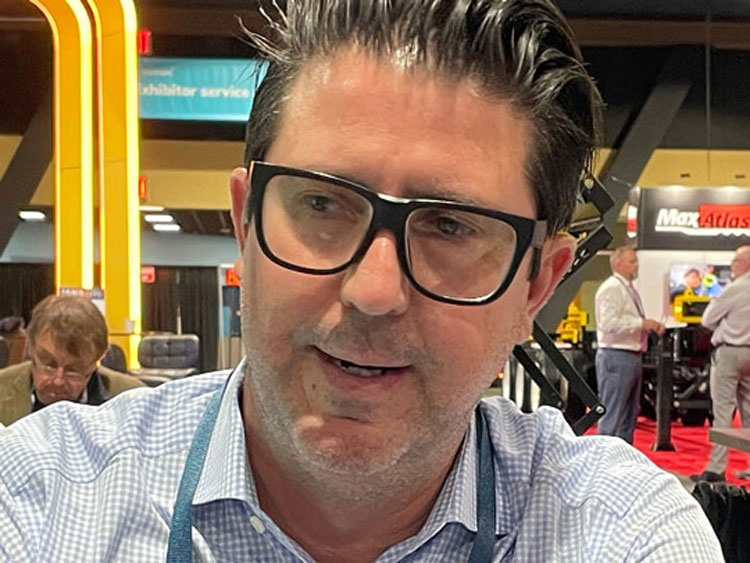
CargoSprint’s Krissman on harbor truck appointment upgrades
In light of the complaints about the CargoSprint harbor trucking appointment system voiced by Port of Oakland harbor truckers, CargoSprint CEO Caro Krissman says he is now hopeful a new upgrade will streamline the process and make the appointment process more user-friendly. (See Stas Margaronis, AJOT August 21, 2025, article)
In an interview with AJOT at the IANA 2025 Expo, Krissman said, I want to start by just acknowledging what a challenging time it is for motor carriers and independent operators and especially in the Oakland Gateway. We’re incredibly excited about the new solution that we’ve announced today (Sept 18) in conjunction with the Port of Oakland. And while it doesn’t eliminate all the problems, I would say it materially alleviates some of these challenges. And we’ve got a number of early adopters from the drayage community in Oakland using the product now. And the feedback has been quite positive thus far.
Krissman described how the new CargoSprint product works: “Effectively, what the product does is it overlays across all three terminals at the Port of Oakland and allows the motor carrier to create some business rules and orchestrate their appointments to create a lesser burden on their dispatcher and create a more seamless experience for the dispatcher versus the individual experience that exists today.”
READ ENTIRE ARTICLE

CMA CGM upgrades Port of Lyon operations as Propeller Club convention arrives
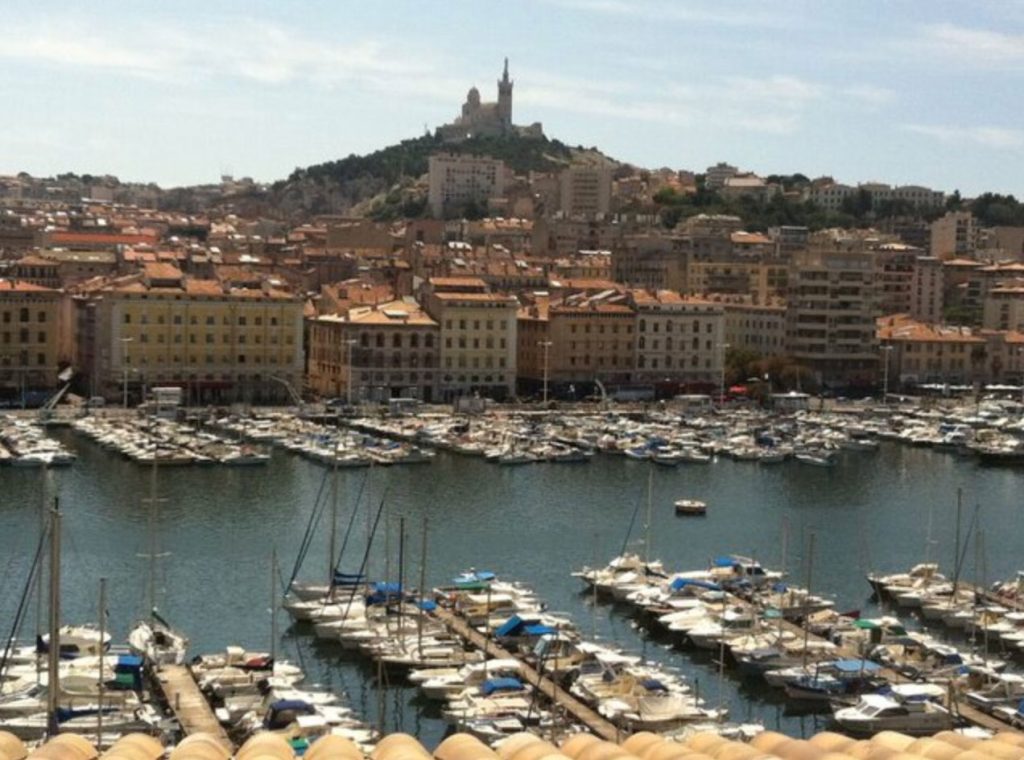
The inland Port of Lyon, France, will be receiving a €40M upgrade from Marseilles-based CMA/CGM to improve container-on-barge service, according to Jean-Christian Vialelles, Principal at JCV Management and President of the Propeller Club of Lyon.
The funding will go to improve container terminal operations as well as container moves to rail transport, he said.
n an interview with AJOT, Vialelles said the upcoming International Propeller Club convention taking place in Lyon from October 13-15th, 2025, will showcase the importance of container on barge commerce in partnership with the Port of Marseille. The Rhône River links the two ports.
Inland port operators and stakeholders in the United States, including those on the Mississippi River and its tributaries, will see many parallels with Port of Lyon operations.
Port of Marseilles
A keynote speaker at the International Propeller Club convention will be Christophe Castaner, Chairman of the Port of Marseille, who will discuss the importance of Marseille as a Mediterranean-based port and Lyon’s importance as an inland Marseille port partner.
The transit time between Lyon and Marseille is about 33 hours by water.
The Rhône River has been engineered with dams and locks over a total distance of 310km from its confluence with the Saône at Lyons-La Mulatière to Port-Saint-Louis-du-Rhône. From there, the Mediterranean is reached through a short canal, the Canal Maritime Saint-Louis, according to French Waterways.Com which also points out:
- The vast program of works begun by the Compagnie Nationale du Rhône (CNR) in 1933 was completed in 1980. Navigation alternates between wide deep river sections and 11 diversion canals.
- At Lyon, the Rhône is joined by the Saône, which connects it with all the waterways of central and eastern France. Upstream of the confluence the Upper Rhône has also now been partly developed by the CNR.
- The Rhone River’s power is harnessed at each dam to produce hydroelectricity; the valley also has nuclear power plants and wind farms. Navigation thus alternates between the bed of the Rhône, 300 to 500m wide, in which short steep waves may be generated by southerly winds, and 11 diversion canals, in which the locks are generally located towards the downstream end. The Mistral (northerly wind) can make lock entry difficult from upstream. The current does not exceed 7 km/h, but when combined with the effect of the Mistral, it can make progress upstream laborious for low-powered boats.
READ ENTIRE ARTICLE

Road Dog Trucking Radio Interview with Stas Margaronis
JULY 30, 2025

Propeller Club of Oslo’s Ogis sees maritime collaboration to support decarbonization

Shipping companies will need to collaborate to support decarbonization if the United Nations’ International Maritime Organization (IMO) votes to implement zero-emission rules at its October meeting, according to Sinem Ogis, the new Chair of the Propeller Club of Oslo (Norway).
In an interview with AJOT, Ogis related how she moved to Norway from the Netherlands where she had been working for the Dutch carrier Van Oord, a specialist in dredging and offshore wind installations.
This occurs at the same time as an impending October vote on IMO rules governing emission reduction by ships:
“So basically, right now, IMO is working on the global emission scheme to put pricing on the emissions. … But on the European side, the EU commission already moved forward with the emissions trading scheme. So, shipping has already pricing added like … carbon costs, carbon tax, when they call at EU ports.”
IMO decarbonization rules vote in October
Andrew Forrest, Executive Chairman of Australian mining company Fortescue, is urging the global maritime industry to support the IMO goals for zero emission shipping by 2050. The IMO goals will be voted on in October.
READ ENTIRE ARTICLE

Nor-Shipping 2025: Shipping executives warn of long road to zero-emission fuels
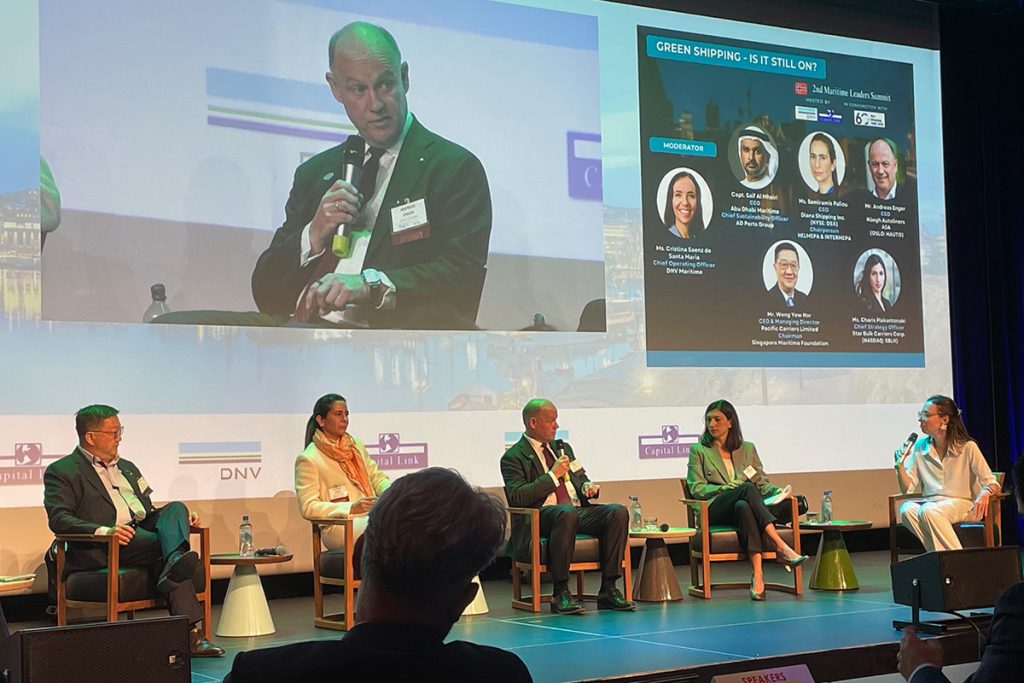
Shipping executives are warning that the transition to green and zero-emission fuels will be a long and difficult one even with new goals being set by the International Maritime Organization.
Speaking at the 2nd Maritime Leaders’ Summit, in Oslo, sponsored by Capital Link and DNV in conjunction with the 60th Nor-Shipping conference and exhibition, the executives worried that infrastructure and financing for fuels transition is currently lacking.
READ ENTIRE ARTICLE

Propeller Club of Northern California’s Maritime Day speakers cite threats to mariners & tariffs
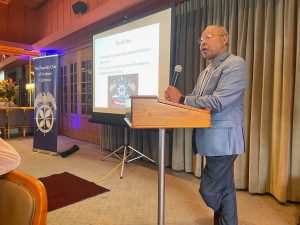
As a result of the heightened immigration situation in the United States, “mariners are afraid of getting off their ships in the United States because they are worried, they might not be able to get back on,” according to Robert Wilkins, Executive Director, Seafarers’ Ministry of the Golden Gate.
On May 21st, Wilkins spoke at the Propeller Club of Northern California (PCNC) Maritime Day luncheon at Scott’s Seafood, Oakland.
Plight of Mariners
Wilkins said the plight of mariners is getting worse, not better: “For seafarers, these are very, very volatile times on a lot of different fronts. And seafarers feel that in a very, very unique and profound way. Primarily because they live and work maritime 24/7, live and work in the same place for months and months at a time, isolated away from their loved ones and under some pretty difficult circumstances. They conduct their work on behalf of all of us. I like to say that we all depend on seafarers.”
Wilkins said that recently, the International Labor Organization (ILO) convened groups of shipowners, seafarers, and governments “to monitor progress and lay out provisions for working conditions and rights of seafarers. Just recently, they met and made some agreements on several things that advance the welfare of seafarers, namely that seafarers should be granted shore leave, regardless of their status in terms of visas or the flag registry of their particular ships.” There are also supposed to be provisions for medical attention on ships; however, “There are … ships I have boarded … where there are not medical provisions and there are all kinds of injuries, small nagging injuries, and other kinds of medical things that take place. And there are no provisions for that.”
Surveys of mariners reflect tougher times. “There are several organizations in the world that ask seafarers how they are doing. The primary index for that is called the Seafarers Happiness Index, done by the Mission to Seafarers, supported by Northern Standard a great insurer. The most recent one for Q4 has some kind of depressing news … The seafarers answer questions in 10 different categories about their life on board and work conditions, and so forth. So, on every single category in Q4, it went down.”
READ ENTIRE ARTICLE

Propeller Club Forum Highlights Success of MaritimeTransportation Women
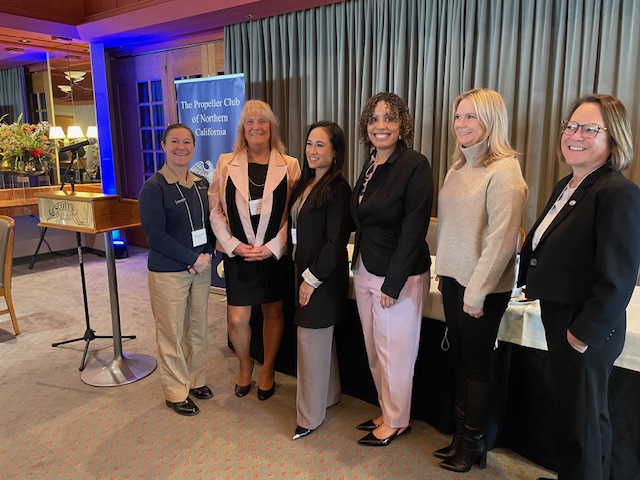
Six leading maritime transportation women shared their success stories that highlighted the growing role of women in the U.S. maritime industry. Many cited the support of mentors, many of whom were men, as one key to their success.
The six shared their experiences at the Propeller Club of Northern California on February 18th and included: Susan Ransom, Stevedoring Services of America, Captain Samar Bannister, California Maritime Academy, Captain Anne Mcintyre, San Francisco Bar Pilots, Carolyn Almquist, Port of Oakland, Leanne Andalis, Pasha Group and Laura Germany, Pacific Merchant Shipping Association (PMSA).
However, the Propeller Club audience’s loudest ovation was accorded to Kristi McKenney, the Port of Oakland’s new executive director. On February 13th, the Oakland Board of Port Commissioners named McKenney the new executive director following announcement of Executive Director Danny Wan’s retirement on February 28.
McKenney will be the first woman to serve as executive director in the Port of Oakland’s 98-year history.
“I’m grateful and excited for this opportunity to lead during such a transformative time in Port history,” said McKenney.
McKenney joined the Port as an environmental planner. She has held several positions at the Port, from Assistant Aviation Director to Interim Executive Director. She has been the Port’s Chief Operating Officer (COO) since February 2020.
“We look forward to Ms. McKenney taking the Port’s vision to the next level,” said Port of Oakland Board President Michael Colbruno.
READ ENTIRE ARTICLE

CHINA’S TAKE OVER OF TAIWAN COULD HAVE “REVOLUTIONARY IMPACT” ON U.S. NATIONAL SECURITY
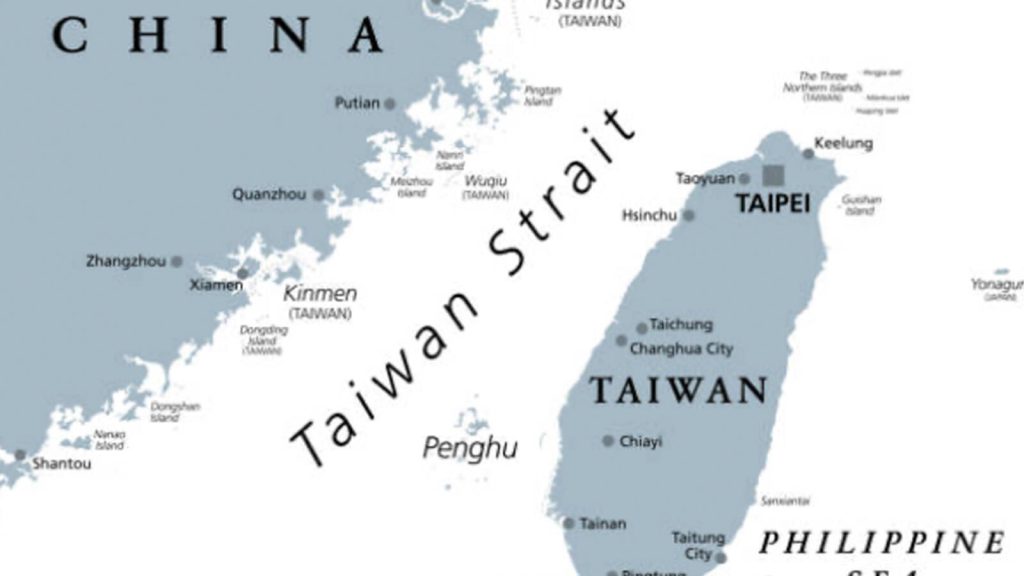
CHINA’S TAKE OVER OF TAIWAN COULD HAVE “REVOLUTIONARY IMPACT” ON U.S. NATIONAL SECURITY
If China takes over Taiwan, it would be “the most revolutionary situation in security terms in East Asia since the rise of Japanese power in the 1930s and the outbreak of World War II”, according to Peter Enav, Editor of the Taiwan Strait Risk Report.
Enav emphasized that President Donald Trump’s decision to support Taiwan or accede to a Chinese take-over is a critical national security question.
Reflecting concerns in Japan, a January Nikkei Asia report worries that in upcoming negotiations between the Trump Administration and China: “Beijing may request that the U.S. change its wording on Taiwan, shifting, for instance, from “not supporting” Taiwanese independence to “opposing ” it.” [1]
Enav warned that increased Chinese pressure on Taiwan could lead to restrictions on ocean shipping to the island, higher marine insurance rates and possible restrictions on the sale of high-end semiconductors, made in Taiwan, to the United States.
Enav spoke at a Propeller Club of Northern California webinar produced in cooperation with the California State University Maritime Academy on January 21, 2025.
